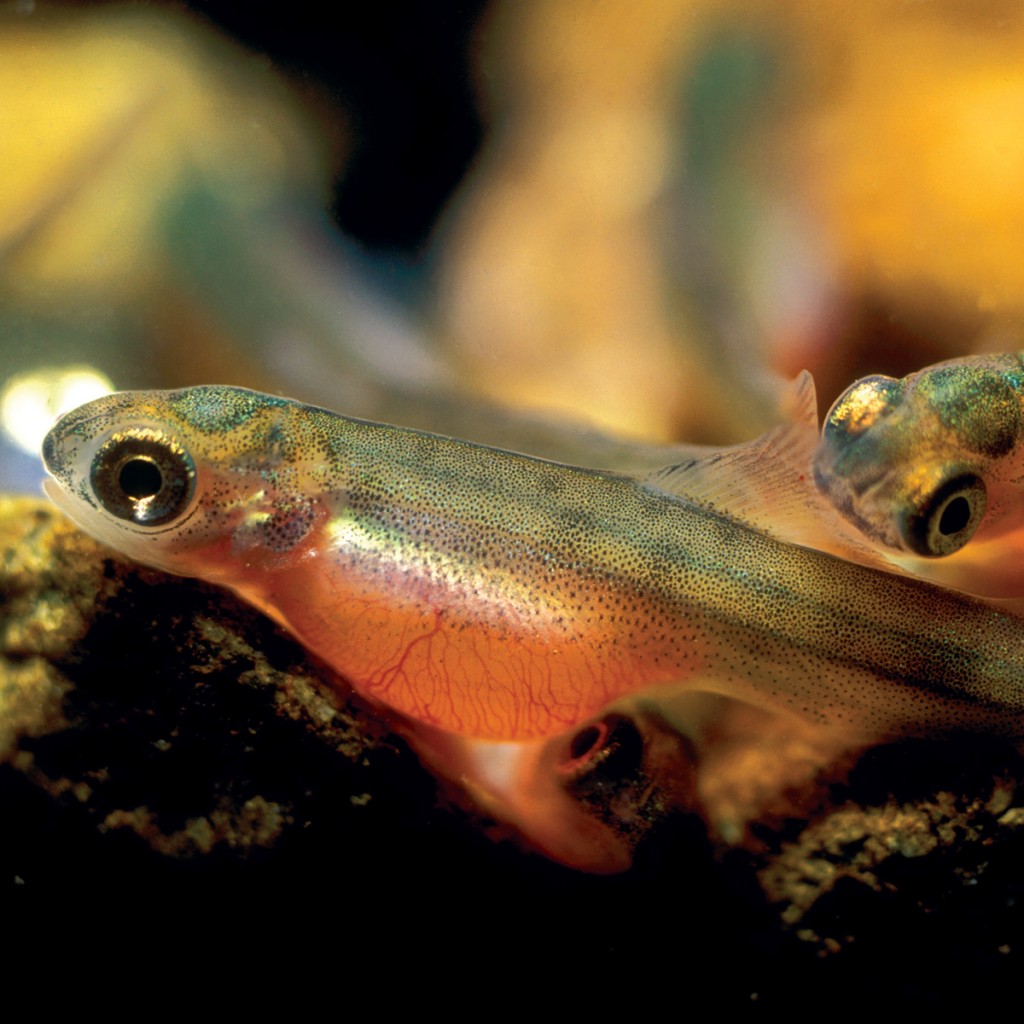Salmon belong to a family of fish called Salmonidae. This family appeared between 30 and 50 million years ago with modern salmon appearing in the fossil record about six million years ago. All species of salmon are anadromous, which means adults migrate from the ocean to freshwater streams to deposit their eggs. After variable periods of rearing in freshwater, juvenile salmon migrate to the ocean to grow and mature, when the lifecycle repeats itself with the next generation. Except as noted, all salmon are semelparous, meaning that they die after spawning once.
Four main species of salmon return to the Columbia River:
Salmon once occupied nearly 13,000 miles of Columbia River Basin streams and rivers. According to conservative estimates, the Columbia River Basin, both above and below Bonneville Dam, once produced between 10 and 16 million salmon annually. Historically, salmon runs in the Columbia River Basin consisted of 16% fall chinook, 12% spring chinook, 30% summer chinook, 11% coho, 23% sockeye, 8% steelhead, and less than 1% chum. These runs generally extended from March through October, though steelhead runs extended through the winter. Below is a video showing how the area accessible to salmon has been reduced over the 120 years between 1890 and 2011.
Wild Salmon Life Cycle
After 1 to 7 years in the ocean, the adult salmon that have survived countless hazards from predators, ocean conditions, and commercial harvest return to the Columbia River and head for their home streams.
Arriving at her home stream, a female builds a nest, or redd, in fine, clean gravel.
As a female deposits her thousands of eggs, a male releases milt, fertilizing them. Both male and female salmon die soon after spawning, except steelhead and cutthroat, which may survive another year or more to spawn again.

enlarge +
Jeffrey Rich photo
Tiny yolk-sac fry, or alevins, hatch after 2 to 8 months. They stay in the gravel for another 1 to 3 months until the food from the yolk sac is used up. They need cold, pure water to breathe and wash away their wastes.
The fry emerge from the gravel and begin to feed on their own. Many are lost to predators, competition, or failure to adapt to stream conditions. Some types of salmon begin their migration downstream soon after emergence, while others stay in freshwater for a year or more.
During migration the fry are vulnerable to predators, such as birds or northern pikeminnow, walleye, and bass, which thrive in the reservoirs. Seven to 15 percent die passing each dam.
By the time they reach the estuary, the fry have become smolts, and their bodies are adapting to saltwater. Here they linger to feed and grow before entering the ocean. Predators, unfavorable conditions, and failure to adapt will deplete their numbers further.
Once adapted to the ocean, the smolts will spend one to seven years in the ocean, migrating thousands of miles and growing into adults before returning to their home streams to repeat the cycle.
- See more at: http://www.critfc.org/salmon-culture/columbia-river-salmon/#sthash.K2c9DXeQ.dpuf